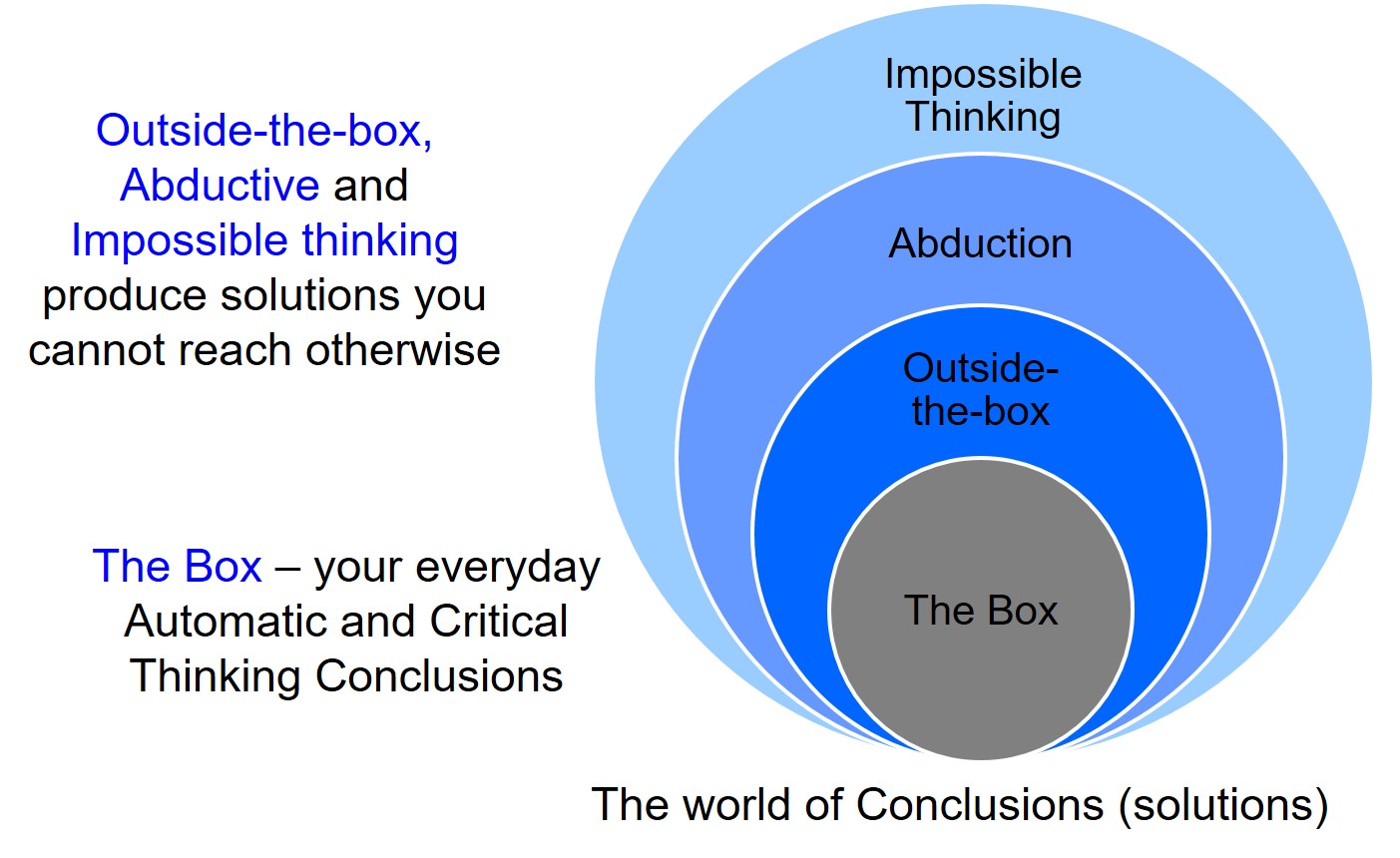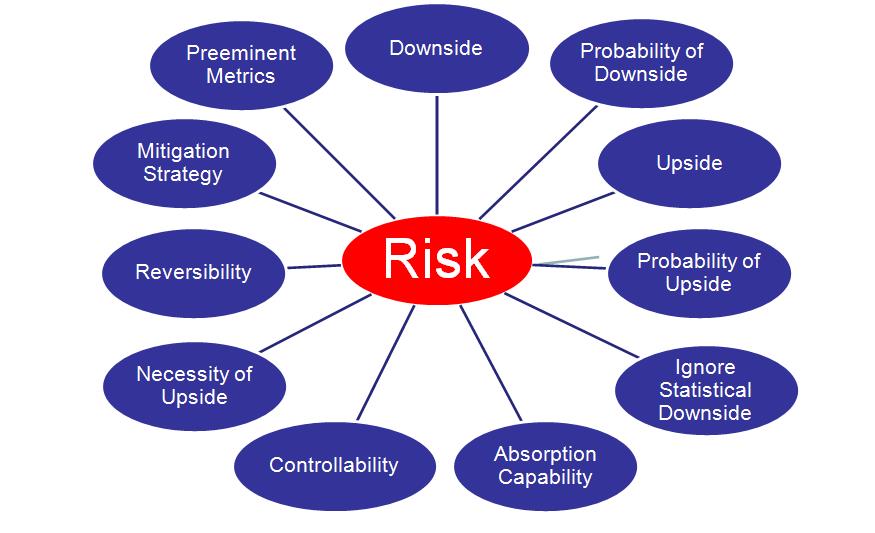Using concepts from our model we created a simple framework for Critical Thinking
We contrast your everyday automatic thinking with Critical Thinking.
Decisions
Conclusions
Clarity
Critical Thinking
Stronger foundation for decisions
More time on getting clear and less time and rework needed for decisions
Clarity
Clarity
Conclusions
Decisions
Conclusions
Decisions
Automatic Thinking
Optional:
Post course 1:1 mini coaching sessions available for followup and continued assistance
Mulitple curriculums for varied attendees
We also modify the curriculum for the mix of attendees:
• Executives and Business Leaders
• Teams (a Manager and team, or cross functional)
• Supervisors, Managers and Directors
• Individual Contributors
• Mixed class of multiple disciplines and responsibilities
Focus
People, Time and Money spent
on the right problem
Clarity of issue and decision to be made
Thoughtful,
Defendable and Clear Conclusions
New ideas
Skills to influence and Guide Others
Alternatives
Solid Conclusions
Successful Decisions
Fewer iterations and redo's
Crisp, Decisive, Defendable Decisions
Alignment
Enrollment
Risk Mitigation
Faster and Quality
Decision Making
Weaker foundation for decisions
Less time on getting clear and more time and rework needed for decisions
This Results in ...
What's the benefit of Critical Thinking
Attendees learn Pragmatic Critical Thinking Techniques resulting in;
• Faster and higher quality decisions that are more likely to be the correct ones.
• Superior solutions to problems, goals, and strategies.
• Better understanding of the dynamics between different aspects of a business or project
• Innovative ideas and solution
• Higher productivity
• Being better equipped to tackle problems and make decisions on a daily basis.
Critical Thinking skills gained can be applied to:
• General problem solving and decision making
• New product ideas and creation
• Short and long term business strategies
• Improved development processes and quality
• Improved operational efficiency
• Crisis Management
• Revenue generation and cost reduction strategies
• Customer care improvement
Contact us for more information or to schedule a Workshop
What's unique about our workshop?
This isn't your ordinary "academic" day. It's not just "theory", but pragmatic, proven techniques for solving real world business problems, strategies and challenges.
Customized
We customize the workshop to your business, with real examples and exercises that come from interviews with would be attendees. The attendees learn critical thinking AND see it in action with their own day-to-day issues.
Critical Thinking
For Problem Solving and Decision Making Core + Advanced
Course #351 -
Our most popular
Duration: 2 Days, At customers location or Virtual Live
Get Clear
Empty Bucket
Inspection
Need
Why?
So What?
Else
Anticipatory Thinking
Reach
Conclusions
Facts
Observations
Experiences
Beliefs
Assumptions
Credibility / Consistency
Influencing
Change
Presenting / Defending
Abduction
Outside-the-Box
Impossible
Triangular Thinking
We present a set of core tools and exercises combined with those from our advanced and innovation workshops to create solutions and just as important, to present them with credibility.
Decisions
Who
When
Need
Risk
Criteria
Advanced Decision Making incorporates a Risk Model
Overview
(Download the Workshop Brochure for more details)
This course includes everything in the Core course (#201) plus Influencing and Communicating ideas, Fuzzy Criteria, A 11-Point Risk model and template, Presenting, Arguement Analysis, Thinking outside-the-box, Abductive and Impossible Thinking, and Being a Thinking Coach.
The course objectives include:
• Distinguish “Automatic” Thinking from “Manual”
• Understand a Framework for Thinking Critically and apply the 3 step Critical Thinking Process
• Learn and practice a variety of tools to think critically including the use of Thinksheets to:
• Get Clear on a Problem, Situation or Goal
• Guide your thinking for Conclusions
• Guide your thinking for Decisions
• Be able to identify the “box” that constrains your current thinking and think outside of it.
• Creating credible presentations for buy-in, enrollment and approval.
• Think through 11 risk factors and how they weigh in
• Leave the day knowing how to ask questions to get yourself and others to think critically
• Identify where you can apply Critical Thinking in your job and create a next steps plan
Topics Covered:
• Distinguishing “Automatic” Thinking from “Manual Thinking”
• Benefits of Critical Thinking
• Empty your bucket
•
Clarity
- “Get Clear” on a problem to solve or decision to make, and the Clarity Thinksheet
• Inspecting the problem statement
• The tools of Socratic Questioning; Why, So What, Anticipatory Thinking
• Need vs. Want
• A Family of HeadScratchers
•
Conclusions
- Create Solutions and the Conclusion Thinksheet
• Applying Inductive & Deductive thinking.
• Understanding the Premise that leads to a conclusion and how personality affects this.
• How facts, assumptions, experiences, beliefs, and observations affect your thinking
• Why people come to different conclusions and what to do about it.
• Credibility and Consistency - Increasing the strength of your premise
• Triangular Thinking – When you can’t know exactly
• Using Critical Thinking to Influence and Persuade
• Argument Analysis – Review for and against arguments as elements of conclusions
• Presenting your solutions
• Role Play
•
Innovation
- Creating an environment and stimulating creativity and innovation
• Thinking Outside-the-Box - Challenging the Premise (What if?, What other?)
• Abductive Thinking - Thinking beyond your experience
• Impossible Thinking -To generate Breakthrough ideas
•
Decisions
- Taking action and the Decision Thinksheet
• The Elements of Decision; Who, When and Criteria
• Preeminent Metrics – What can be measured that can act as an early warning system and
gives you the time to change direction and the outcome
• Risk Criteria – A 11-point Risk model that helps you evaluate the risk and your personal
risk level w/exercises (Downsides, Downside Probability, Upside, Upside Probability,
Downside, Absorption Capability, Ignoring Statistical Downside, Controllability,
Necessity of Upside,
Reversibility, Mitigation, Strategy, Preeminent Metrics)
• Fuzzy Criteria – Not all the criteria of a decision are black and white. This topic looks at
the grey ones
•
Thinking Coach
• Introduction
• Next Steps - Your plan to implement your learning (for yourself and your team)













